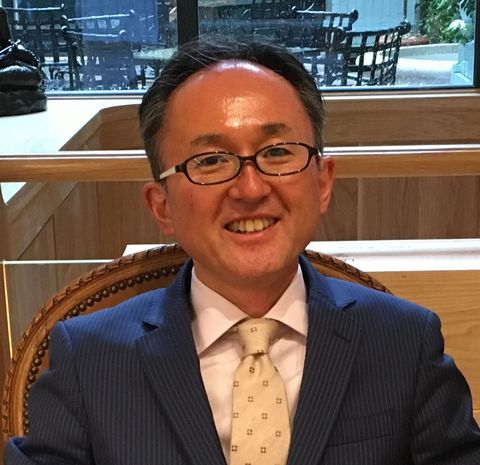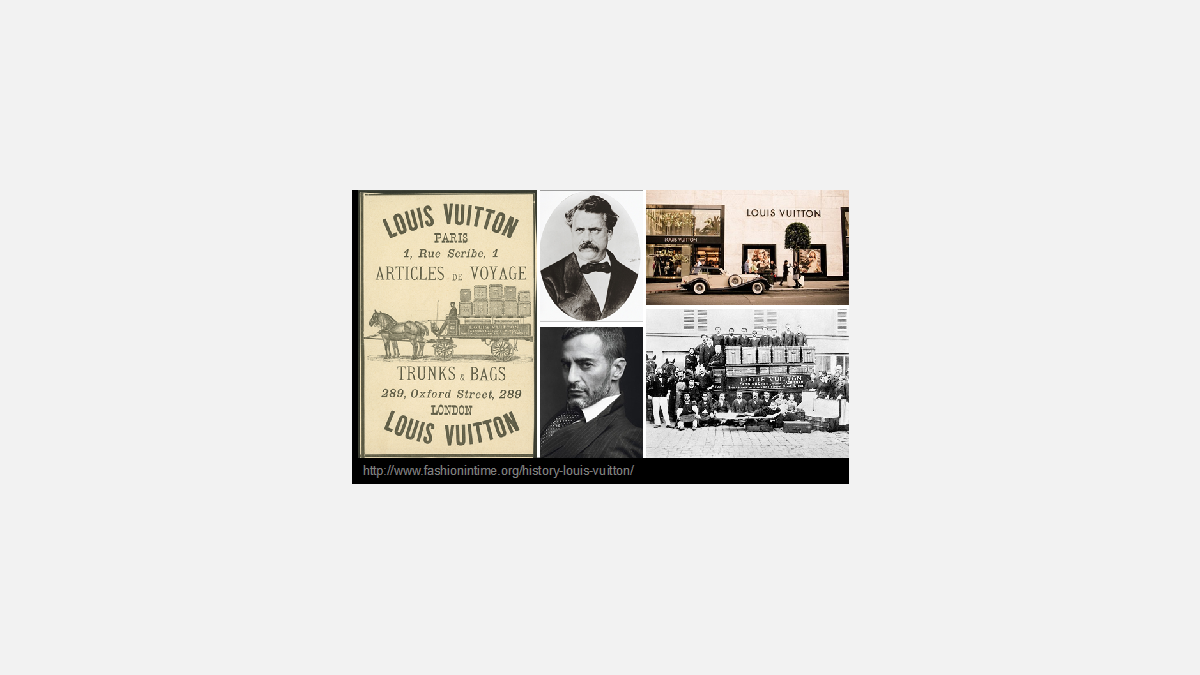Analyses & Etudes
French strategy and Japanese strategy

La Chambre est heureuse d’ouvrir sa rubrique « Analyse » à un article aimablement fourni par Yasuhiko IZUMIMOTO, président & CEO de l'Institut d’Economie et de Stratégie Franco-Japonais SAS et membre de la CCI France Japon.
Definition of strategy
There are thousands of definitions of “strategy” in the world. The history of strategy can be traced back to the Greeks, the Bible or even Evolution (Lawrence Freedman, 2013). Napoleon Bonaparte embodied a new way of fighting wars: a combination of individual genius and mass organisation, and objectives far more ambitious than those of his predecessors.
In the management theory, Henry Mintzberg, McGill University in Montreal, shows that strategy is a plan, a pattern, a position, a perspective and a ploy. According to Frédéric Le Roy, HEC Paris, the strategy of the company is the fact of set objectives based on the configuration of the environment and of the resources available in the organisation and then to allocate these resources in order to obtain a sustainable and defensible competitive advantage. Yaichi Aoshima & Toshihiko Kato, Hitotsubashi University, Tokyo expresses that strategy is corporate’s future and a path to realise it.
I think that David Aaker’s definition is the most straightforward and easy to understand: Strategy is a combination between “where to compete” and “how to compete.” To discuss “where to compete” and “how to compete”, I would like to draw a French company and another Japanese company as examples.
Case Study
In 1835, a 14-year-old boy who was born in a small village of 148 inhabitants in Jura leaves to try his luck for Paris and walked 400 km, which separates it from the capital. He enters in 1837 an apprentice to a "layetier-packer-malletier" (business which was to package the many cases of rich clients who were leaving on a trip) and carries out of the coffers of travel. At the time, cars to horses, boats and trains are the main modes of transport and baggage are too often abused. Travelers are call on the services of the craftsmen for packing and protect their personal effects.
Louis Vuitton is quickly imposed itself as a craftsman of renown in the Parisian workshop of Mr. Marshal. It is as well that his career started in an artisanal sector which requires certain skills and know-how rare. His creations on extent will then become trunks, to respond to the wishes of its customers travellers. (www.lvmh.com)
From 1852, he deals in particular with the washrooms of the Empress Eugenie and the fact recognises its know-how with the customers the most fortunate. In April 1854, he marries Clémence-Émilie Parriaux, founds the brand Louis Vuitton and opens its first store at the 4 rue Neuve-of-Capucines in Paris near the Place Vendome.
Henri Racamier had taken over the leather goods firm of Louis Vuitton in 1977 when its business was slipping 120 years after the founding. Fewer and fewer people wanted leather luggage. The new generation of travellers was buying lightweight luggage that did not need the assistance of a porter; best give leather back to the cows. In 1987 Racamier formed an alliance with another family firm, Möet Hennessy, producers of champagne and brandy and the two groups were merged known as LVMH. In 1988 he brought into the group an investor called Bernard Arnault, aged 39. Mr Racamier was then 76 and saw Mr Arnault as his protégé. (The Economist, 2003)
Today LVMH is led by Bernard Arnault, Chairman & CEO and has become the world leader in the luxury industry in terms of revenue which evolved: 30,638 million Euros in 2014, 35,664 in 2015 and 37,600 in 2016 while operations profit grew from 5,715 in 2014 and 6,605 in 2015 to 7,026 in 2016 with operations profit ratio of 19 per cent.
I suppose that the success of Louis Vuitton, a strong growth engine of LVMH, consists of a) genuine orientation, b) absolute value offering c) legend development. As for “genuine orientation” Louis Vouitton has always tried to enhance their brand and repair service business is one of the pillars of branding activities. These activities help existing and potential customers to be willing to pay “appropriate” price of products. In fact, there is no sales, second line or licence production. The French luxury leader has also been successful in “spinning” their history and legend: how the founder started to be dedicated to “coffre” business, how he walked with history of France or Europe and how their spirit is inherited.
While management and ownership are separated today, Patrice-Louis Vuitton, the 5th generation, is responsible for Special Orders including made-to-order or custom-made and his son, Pierre-Louis Vuitton, the 6th generation is responsible for Regional Amélioration Produit. Family are still centre of craftsmanship.
Here is another example in Japan. The company was established in Sakai, Osaka in 1921 to produce freewheels for bicycles. The founder, Mr Shozaburo Shimano used to tell his three boys to have a worldwide view. One of his sons realised the dream. In 1930’s, its products had been well known nationwide. In 1957, it started to produce 3-speed hubs and to research into cold forging. Then in 1960’s, Shimano started to export the 3-speed hubs while Japanese export of bicycle parts were rare.
It was however no easy to grow business in the US by competing with American manufacturers such as Star May Archer, who had dominated in the American market. In addition, image of Japanese products was very poor at that time. But Shimano gradually improved its presence and Shimano American Corporation was established in 1965. They participated to Bicycle Exhibition in Milan, Italy and in 1972 they founded Shimano Europe.
In 1973, famous Dura Ace was marketed. It was Shimano’s strategy to enhance reputation among professional racing teams in Europe such as Tour de France and to leverage their business in premium market worldwide. Shimano became sponsor of a European racing team as well. Today Shimano has become de facto standard in bicycle racing and has no serious competitor in the market except Campagnolo in Italy.
Shimano’s differentiation comes from the following three points: a) product innovation, b) end-user needs orientation and c) human resource appreciation. Shimano transformed “modular type” to “integration type” components by introducing its own Shimano Total Integration (STI) systems where a set of brakes, derailers, gears, hubs etc are integrated and branded as series such as Dura Ace or 105.
Shimano always sticks to end-user interface in terms of research, communication and services. Good example was dealer caravans that lasted 3 years to visit all the 6000 dealers in the US by 4000cc station wagons filled with new products, parts, tools etc to provide after-sales services, handle claims, support repairs, collect information and introduce new products. The Japanese bicycle parts company recruit bicycle manias or retired professional cyclists for product development. Commuting by bike is encouraged and 24-hour service jacuzzi is installed in the headquarters. Needless to say financial performances are excellent.
Discussion
What are the common points in strategy between the French and Japanese leading companies mentioned above? Firstly, both LVMH and Shimano have strong persistence on genuineness or authenticity. Fight with imitation has been part of history to keep quality and customer satisfaction very high. Innovation is always a critical factor to develop and manufacture the best products and services reflecting authenticity. Secondly, both of the excellent companies are enthusiastic about meeting or surpassing customer expectation. To do so, they always try best to understand the customers, their needs, and the mechanism of customer satisfaction. Thirdly, they are extremely keen on branding. Branding is not only to convey a stunning company image or deliver attractive messages (externally) but also to make constant efforts to keep quality of jobs extremely high such as basic research, product development, production, sales, after-sales and all the other supporting functions. (internally).
Now, what is a difference between French and Japanese strategies? While both Louis Vuitton and Shimano have enhanced the level of authenticity, understanding about the customer expectation, and branding, mode of problematisation seems to be different. Louis Vuitton changed definition of the game. When Louis Vuitton found a different market trend, where the new generation of travellers was buying lightweight luggage that did not need the assistance of a porter” the answer to this was not to introduce handy and lightweight suitcases but raised a different question to define a problem. That was, what do you wish to bring to your travelling? Or do you just need a function or a convenience in your trip? The answer was clearly “no.” The French luxury company proposed to bring a dream or wish where they can contribute to the customer through their story or legend.
Shimano’s strategy has been more straightforward. The Japanese company’s strategy was to strengthen its problem solving capability, e.g., how to change the gears more comfortable or how to apply brake more smoothly. In the process of the evolution of their business, Shimano has enhanced its presence in the premium bicycle components market, made customers happier and created more lucrative market. However they have not changed definition of the game.
Conclusion
I would like to argue the differences in strategy with two axes by referring to a model developed by Kentaro Nobeoka, University of Hitotsubashi. One axis to compare the two cases is “problem presenting” vis-à-vis “problem solving.” Shimano has deepened problem solving activities further mainly through enhancing performance quality. In 1973, “Dura Ace Series” was introduced for rode racers. In 1994 and 1995, Shimano faced a two-consecutive-year decrease of sales and profit. Around that time, slogan of “Team Shimano” was introduced. Its objective was to change culture by getting the employees inside and outside Japan to regard Shimano as being “my company.” In 2000, “Shimano Leadership Development,” a human resource development programme, was introduced. The issue given to the programme was to “realise technology development to be linked with the market.” The participants developed the solution, i.e., to shortcut the distribution channels and establish their own route to receive market information directly. All these strategies functioned very well. Even in this context however I would put Shimano more “problem solving” rather than “problem raising.” and Louis Vuitton more “problem raising.”
The other axis is “meaning value” versus “functional value.” What does it mean that one owns a Louis Vuitton bag? Here it pursues more than performance quality. It can be interpreted to be s story or legend. On the other hand, Shimano’s advancement is on the extension of performance quality or “functional value.”
As a conclusion, I find that Louis Vuitton is going to a “value of meaning” and “problem presenting” direction and that Shimano is proceeding to a “value of meaning (with a less extent than Louis Vuitton)” and “problem solving” direction.
Having simplified the argument of French strategy and Japanese strategy a little too much by introducing only one company for each country, I assume these examples show some tendency of the two different strategies although they share considerable extent of similarity.
Reference
· David Aaker, “Developing business Strategies”, John Wiley & Sons Inc, 2001.
· The Economist, “Henry Racamier”, 10 April 2003.
· Hiroyuki Itami, “Logic of Corporate Strategy (Japanese)”, Nihon Keizai Shinbunsha, 2003.
· Yasuhiko Izumimoto (co), “Pratique du lean”, Dunod, 2010.
· Keio Business School, “Business Case: Shimano”, 2008.
· Frédéric Le Roy, “Les stratégies de l'entreprise, 4e édition,” Dunod, 2012.
· Henry Mintzberg, “The strategy process”, Pearson Education Limited, 1999.
· Shinya Nagasawa, “Why Louis Vuitton is tough in hard times”, Theory Books Kodansha, 2009.
· Kentaro Noveoka, “Innovation emphasising customer value,” Nikkei 13 march 2017.



